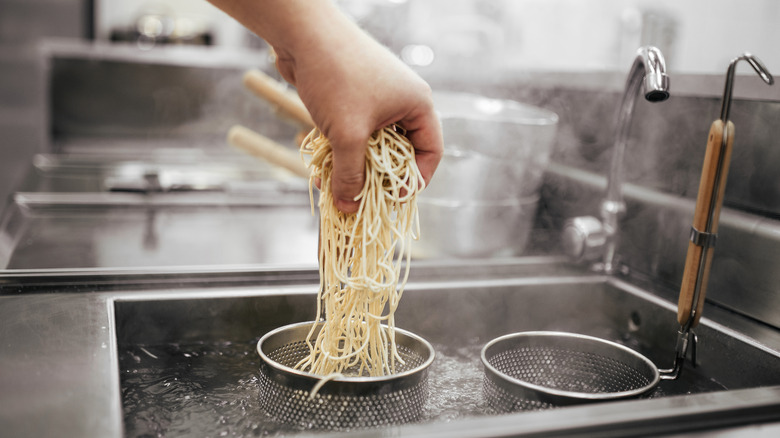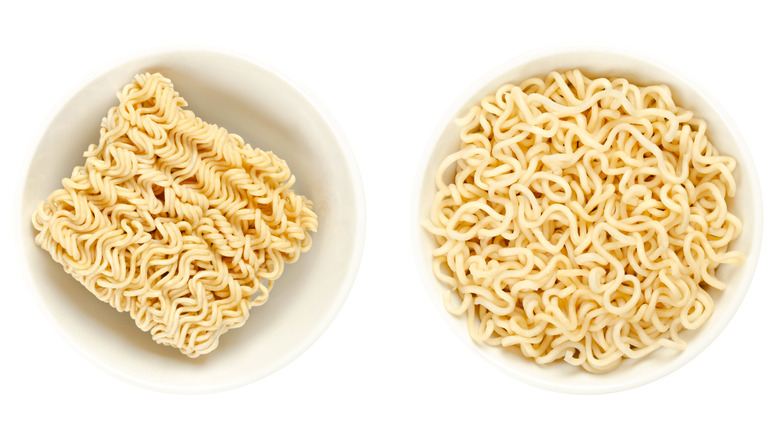Why You Should Start Cooking Your Ramen Noodles Separately
Making a delicious bowl of ramen involves doing a hundred little things well. Everything must come together just right, from the perfectly heated soup to the slightly runny center of a ramen egg. And if you're serious about ramen, it doesn't matter if it's a homemade bowl or noodles you rip out of a plastic wrapper. One mistake can lead to a dish that's more of a chore than a pleasure. Although it may be unrealistic to pull out all the stops when you need something quick and easy, there are some easy steps you can take that will make a significant impact immediately — especially when it comes to the noodles.
It's easy to forget the noodles and get distracted by elaborate toppings and ramen hacks. Noodles are foundational and can make a difference in both texture and taste. When you boil the noodles separately from the soup (even with instant ramen), you have more control over their doneness and taste. For texture, adjust as you would with any pasta by adding or subtracting cooking time based on your preference. You also strip away a good amount of starch when boiling separately, which would otherwise end up clouding your broth.
More tips for maximizing your ramen noodles
So, you've boiled the noodles in a separate pot of water. Great! Now what? Transfer the noodles from the boiling water to your bowl, but make sure you drain them well. If you've ever seen those baskets with vertical handles that boil single portions of noodles, they're designed that way for a reason. Not only are they convenient, but they let you thoroughly shake the noodles to get as much water out as possible. Ramen broth is not Italian pasta sauce, which usually benefits from a bit of pasta water after boiling, so don't water your broth down unnecessarily.
After draining the noodles, add them to the soup as quickly as possible. It might be tempting to boil the noodles a few minutes in advance and add them to the soup later, but they will only clump together and might cool down to a point where they will bring down the overall temperature of the dish. To avoid this, try timing everything so that it can all come together at the same time. Have your soup near boiling before you start cooking the noodles, and have all your toppings ready in a mise en place so you can assemble the bowl as soon as the ramen noodles have cooked.

